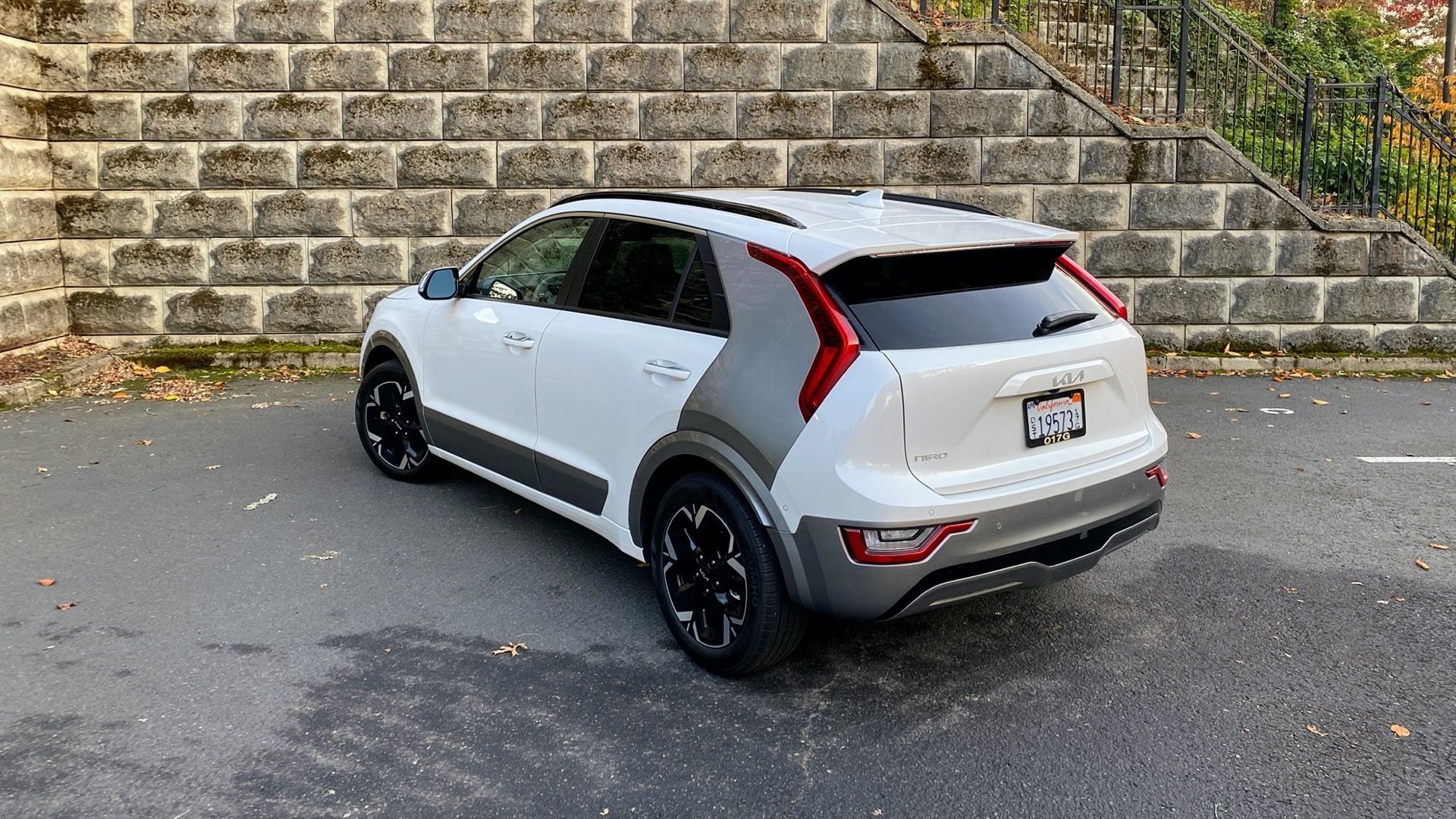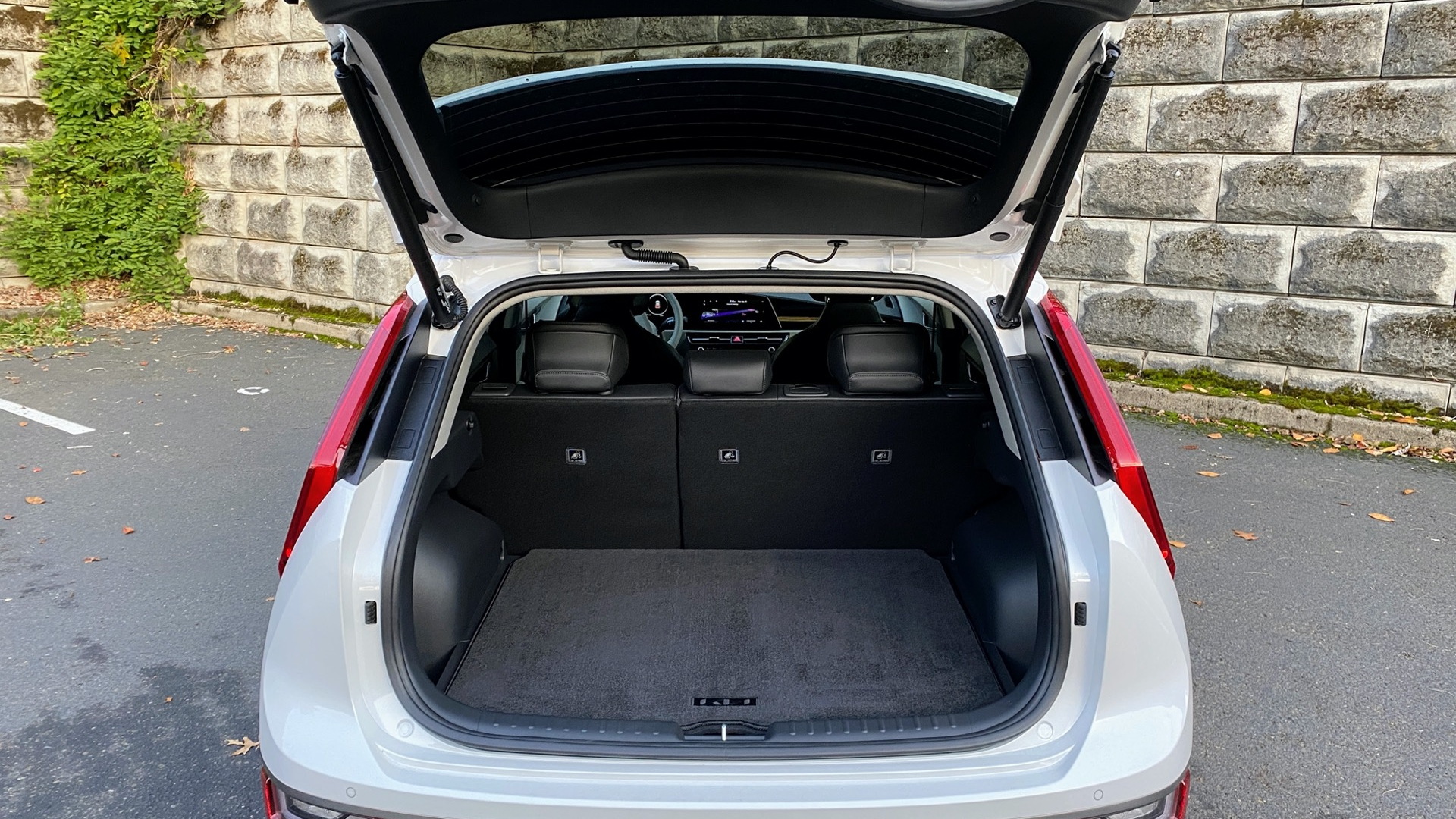As more friends and extended family warm up to the idea of electric vehicles, I’ve noticed an increasingly frequent request: Which EVs offer all-wheel drive and can be had for under $40,000?
The answer: Not the 2023 Kia Niro EV. Not a single model in the American market right now.
The Niro—hybrid, plug-in hybrid, or EV—has been a front-wheel-drive car disguised as an SUV from the start. When the last-generation Niro rolled out, Kia conceded that it was looking at all-wheel drive as a future possibility. After Kia passed on bringing the slightly smaller, stylishly boxy, front-drive Soul EV to America, the Niro EV’s where I’d most expected AWD in its second generation. But here, it returns with a single-motor, front-wheel-drive layout.
In recent drive time with the Niro EV, I found it to be a somewhat better car in nearly every way, but from a brand that’s wowed with its EV6 and teased a correspondingly transformative EV9 SUV, it’s merely an incremental improvement over the car it replaced.
To that point, it boasts no big advance in technology and no significant leaps in efficiency or range. And it backslides a bit on value—with the loss of the outgoing model’s $7,500 EV tax credit inescapably part of it.
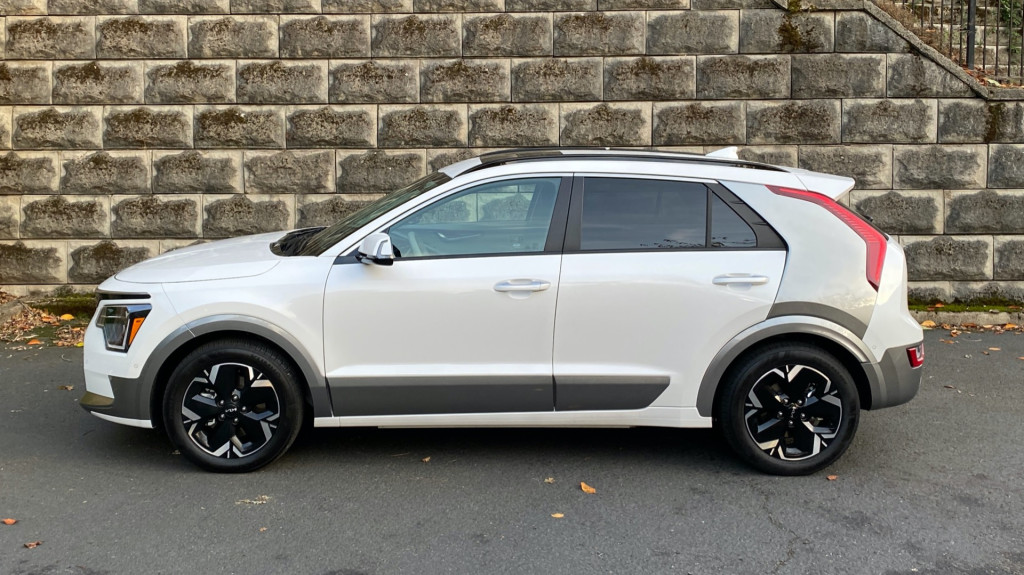
2023 Kia Niro EV

2023 Kia Niro EV
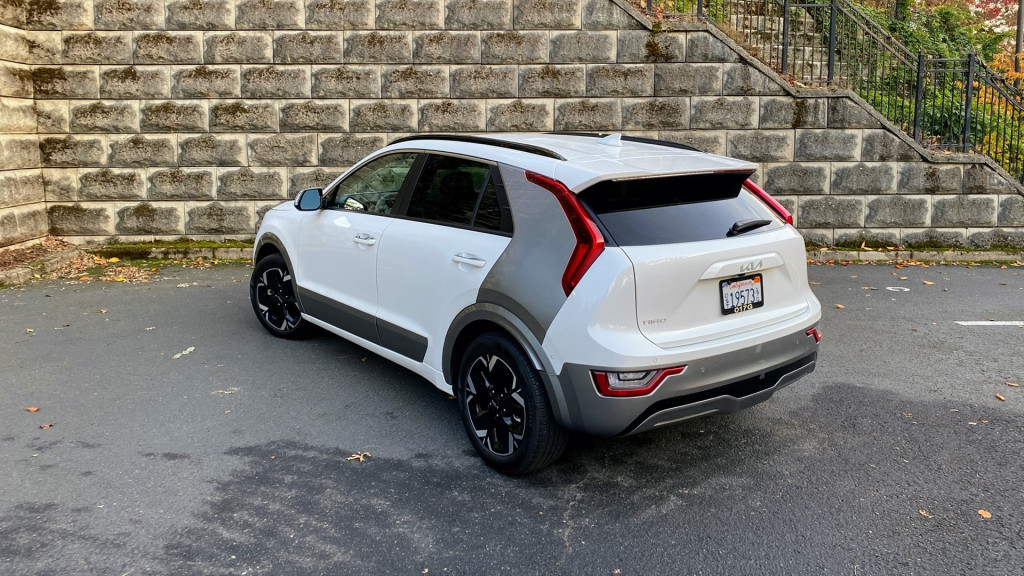
2023 Kia Niro EV
For a brand that’s no longer about value at the core, the proposition gets the most awkward right here, on the verge of an EV price war, looking at where a Niro EV fits in.
The 2023 Kia Niro EV starts at $40,745 for the base Wind model or $45,745 for the better-equipped Wave version. My test vehicle was a Niro EV Wave, with the $1,300 Wave Preserve Package (heat pump plus rear outboard seats) plus premium Snow White Pearl paint, bringing it to $47,635.
That’s only about $5,000 less than the last 2022 Kia EV6 I drove, a loaded GT-Line that felt in a completely different league on overall driving refinement. Or, to see it another way, it’s $20,000 more than the Niro hybrid that shares the same sheetmetal and interior look and comes pretty well equipped.
Kia tried to make up for this near-overlap in pricing between the two models by canceling the base-battery version of the EV6 and raising prices somewhat on the rest of the EV6 line. But the problem wasn’t that the EV6 was underpriced; it’s that the Niro EV is overpriced.
If EV6 is a high achiever, Niro EV is a good passing grade
When the Kia Niro EV arrived for 2019, it was following in the footsteps of the previous Kia Soul EV—and it was a huge step forward in refinement, range, charging, and pretty much every aspect of EV ownership.
Now, the Niro EV is overshadowed by the excellent EV6. Oh, it’s definitely borrowed some tricks from its big brother, though. The Niro EV has made big advances in cabin materials, the interface, and the up-close tactile feel of everything. What hasn’t advanced much is what the Niro EV offers in refinement and performance—which fall into the “just enough” category on both counts.
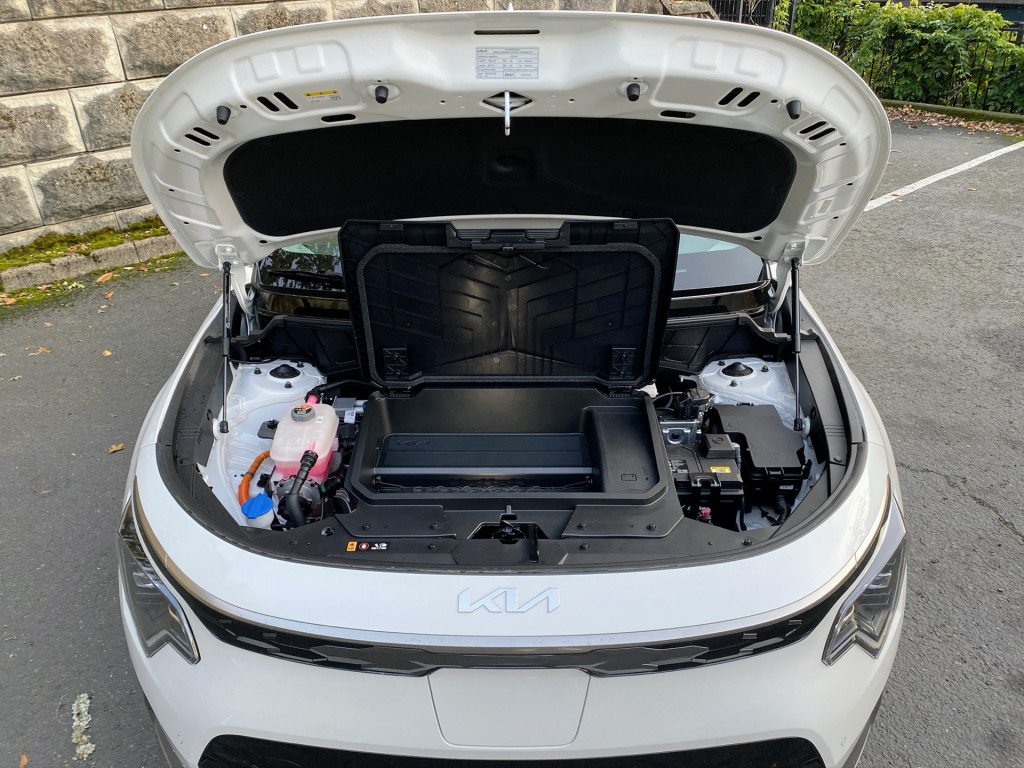
2023 Kia Niro EV
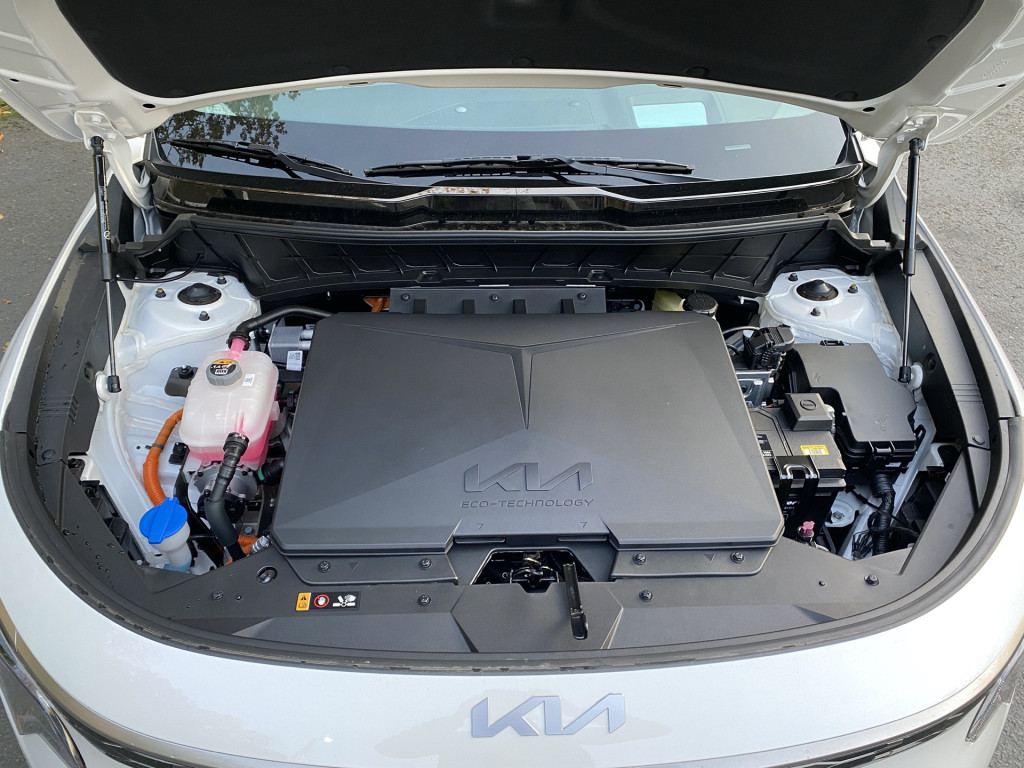
2023 Kia Niro EV

2023 Kia Niro EV
The Niro’s single permanent-magnet motor makes 201 hp, and if you take off quickly from a stop, it makes abundantly clear that it’s delivering its 188 lb-ft of torque through the front wheels, working those not-so-grippy Kumho Solus tires that are quiet-riding but seem to be the limiting factor for all arenas of performance.
Merging onto a stretch of freeway with truck tramlines and some rough spots in the rain, I really had to hold onto the steering wheel tightly—not because its acceleration is anything remarkable, but because those front tires did there too seem more traction-challenged than they should be.
At anything less than that, and leisurely around town, you won’t think about it, and by most assessments it feels quick and quiet. Kia quotes the same 7.8-second 0-62 mph acceleration that it gave the first-generation Niro EV—a figure that was conservative by more than a second by many measurements.
Just as in the EV6 and the previous Niro EV, Kia offers three selectable levels of regenerative braking, plus one that’s essentially coasting, and another mode allowing automatic control of it. We were happiest with the middle setting. Brake blending is well done in the final stretches of stops, and we found the four-wheel discs to do as they should in a high-speed stop.
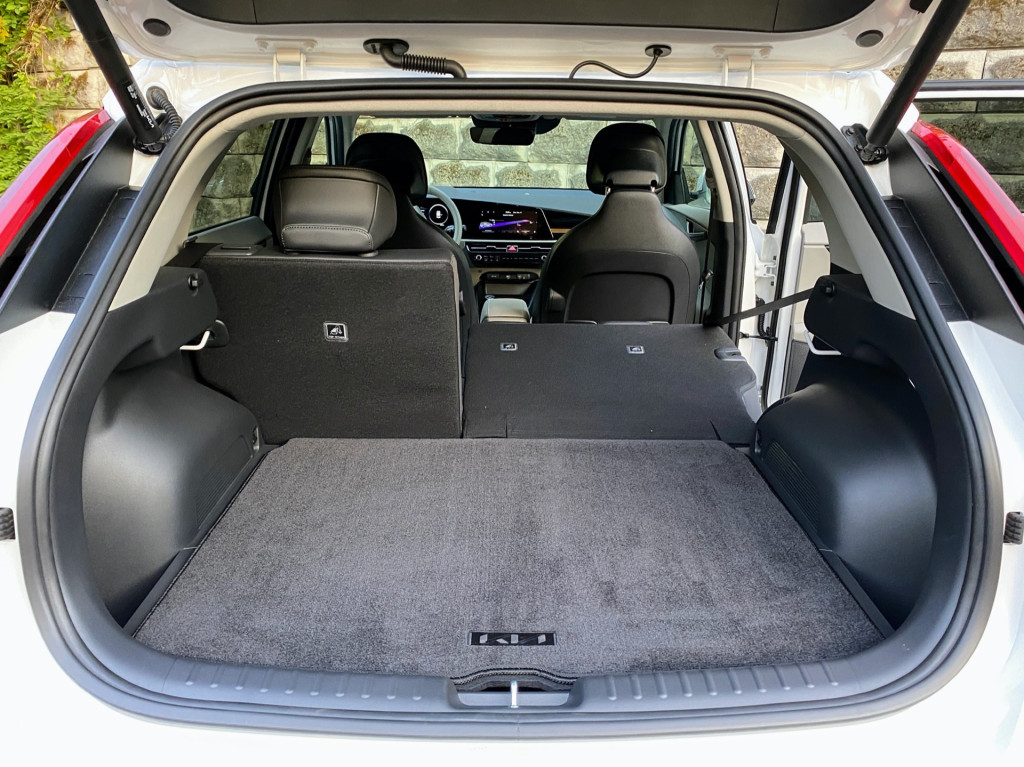
2023 Kia Niro EV
The Niro EV weighs about 3,800 pounds, which is about 50 pounds less than the outgoing model, and that makes it one of the lighter EVs on the market. The battery pack capacity nudges up to 65 kwh (64.8, officially), yet the weight of the entire pack has lost 33 pounds, to 975 pounds.
That said, the Niro EV handles like what it is—a very heavy small car, albeit one that carries the bulk of its weight low. There’s a lot of body lean in corners, and it doesn’t unload from corners or heaves in a way that inspires you at all to drive quickly.
In a relative sense, it is quicker than comparable gasoline small cars, but priced where it is, it needs to do better. For instance, I revisited the much-lower-priced Chevy Bolt EUV (more to come on that) soon after the Niro EV and it felt positively nimble and muscle-car-like. It’s all relative.
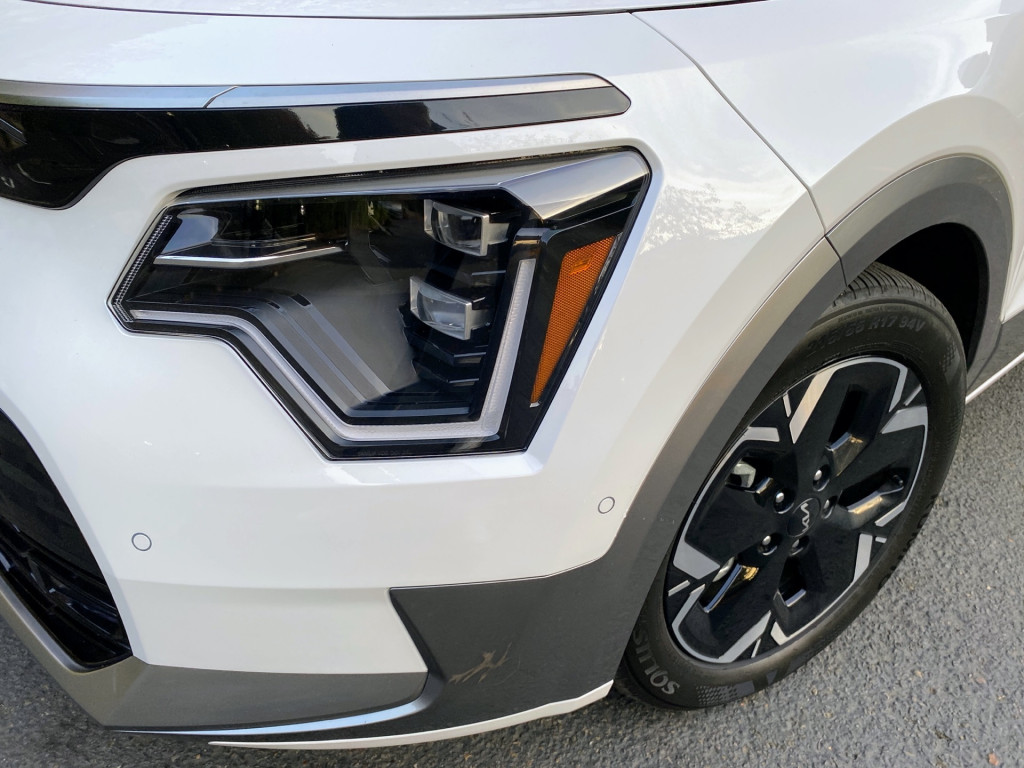
2023 Kia Niro EV
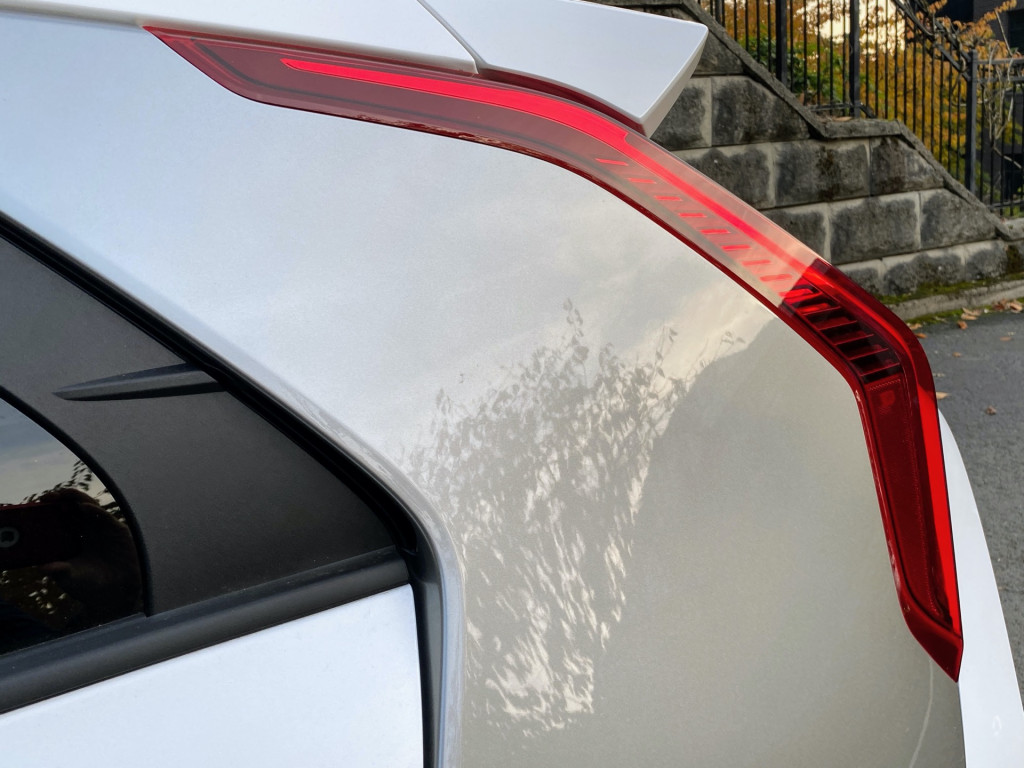
2023 Kia Niro EV
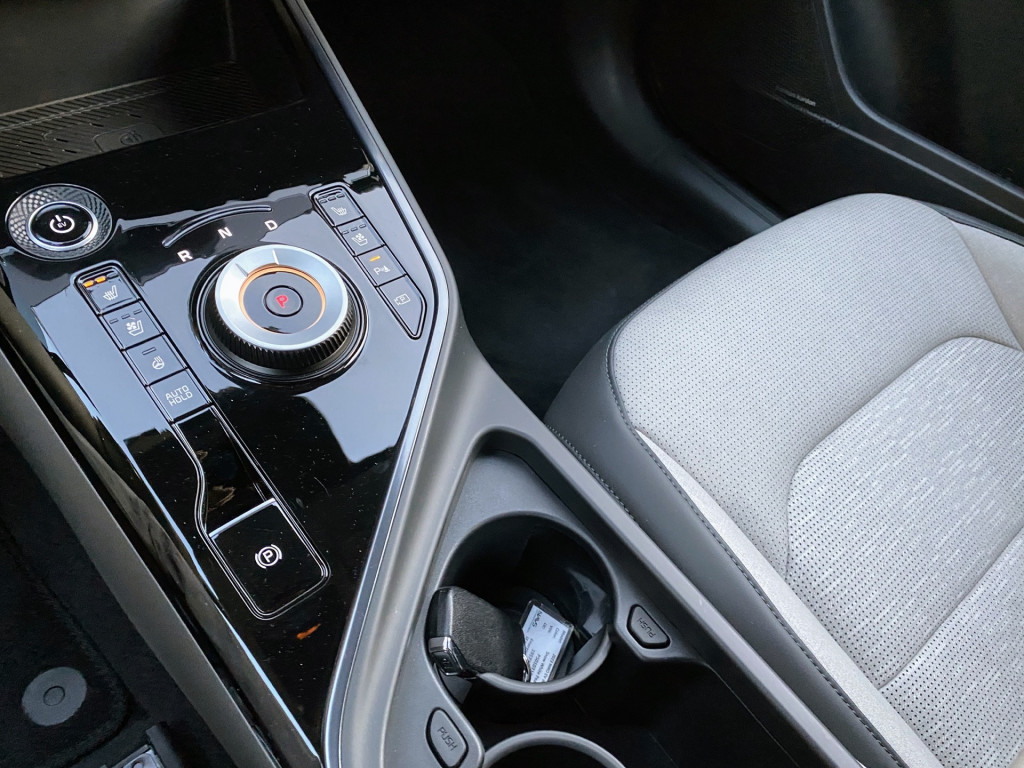
2023 Kia Niro EV
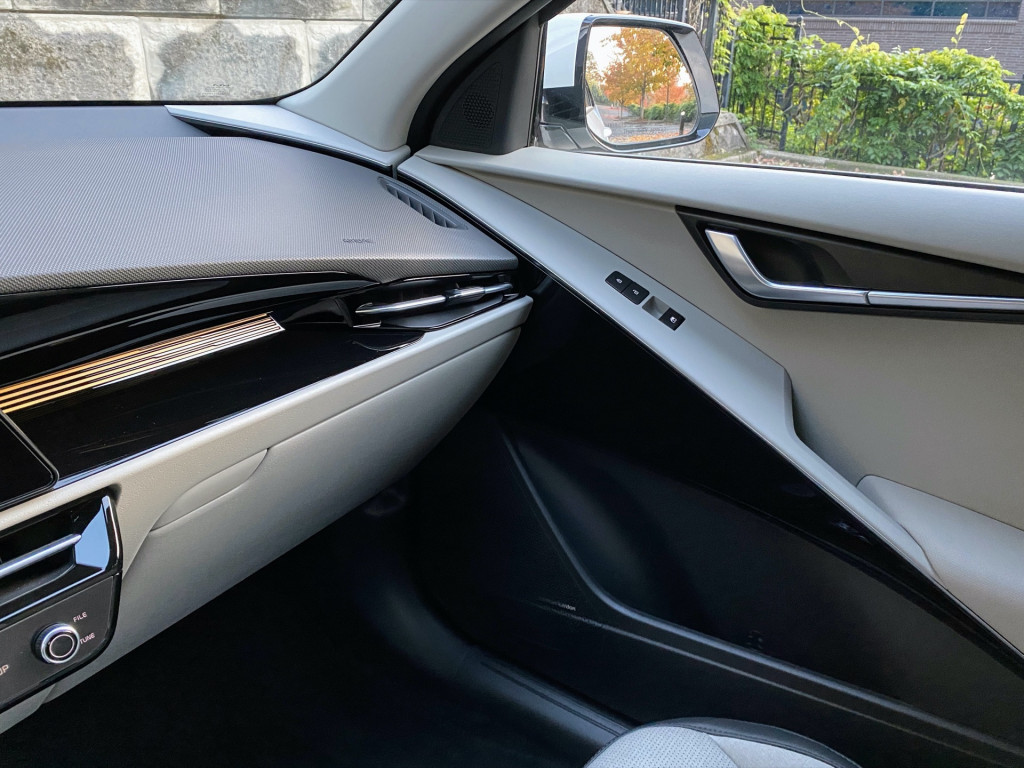
2023 Kia Niro EV
Conflicting impressions inside and out
At least from the outside, the Niro EV doesn’t look like a $45,000 car. It’s a little more gimmicky than you might expect from the photos. The slabs of lower body cladding call out outdoorsy, but it has the ride height of a sedan; the nonsense of a rear window behind rear passenger’s heads is gone, but it’s replaced with a contrast-color rear pillar that is trying awfully hard; the front aero look looks sharply detailed and smooth all at once.
Inside, I really liked the grippy yet breathable feel of the perforated synthetic leather upholstery in the Wave-trim test car. But the seats themselves feel like small-car seats designed for the city—or for smaller people. I’m a long-legged 6-foot-6, and I fussed for a while with the seat, failing to tilt it back far enough to support my thighs with the rather short lower cushion, and my knee rested against the forward left edge of the center console. What’s more, the seats have an odd contouring, perhaps intended to prevent whiplash injuries, that places the headrest uncomfortably close, while coming up short on mid-back support.
The seats in the Volkswagen ID.4, for instance, have much better back and thigh support, for instance, and those in the Nissan Ariya feel positively plush next to these.
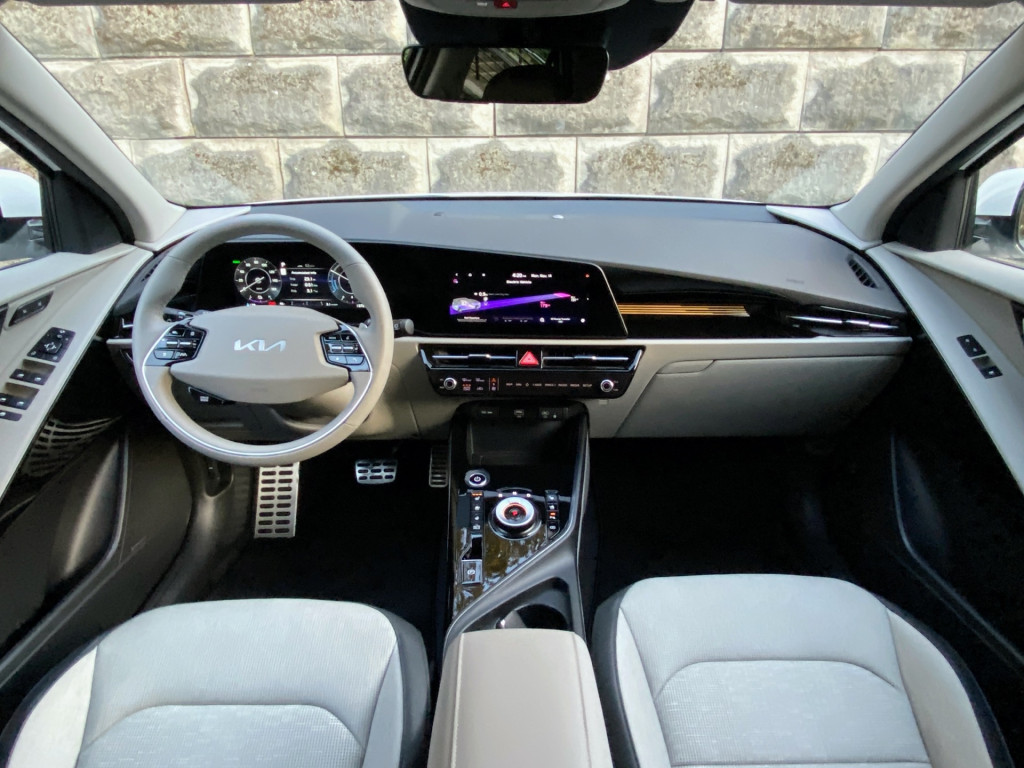
2023 Kia Niro EV
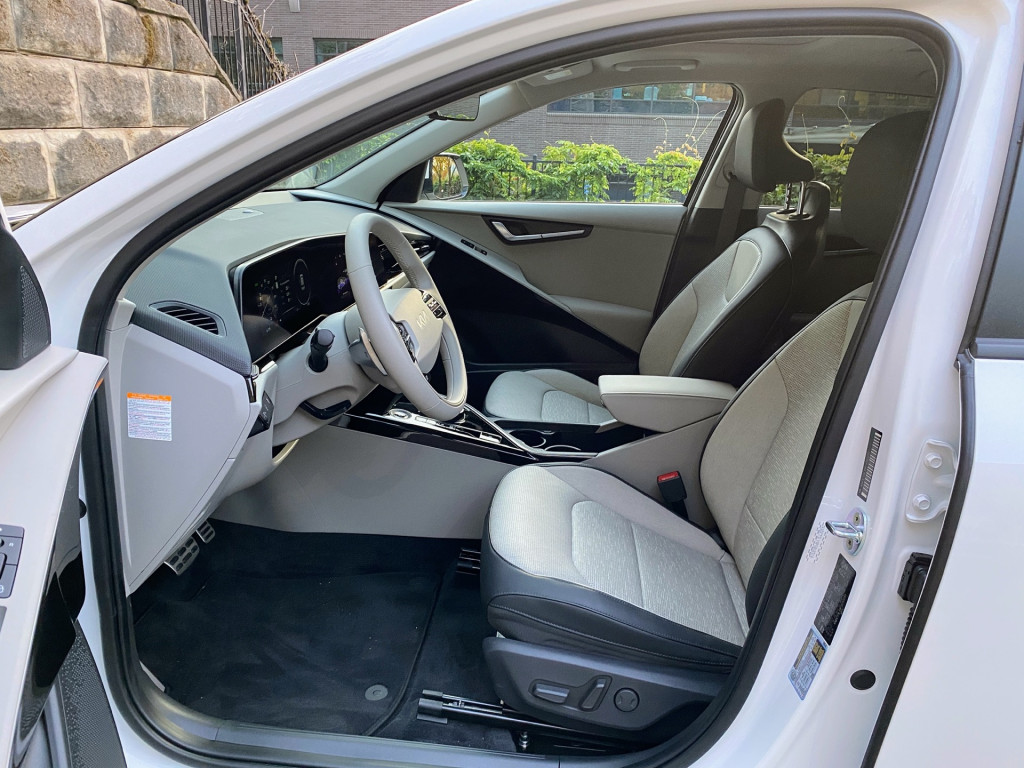
2023 Kia Niro EV
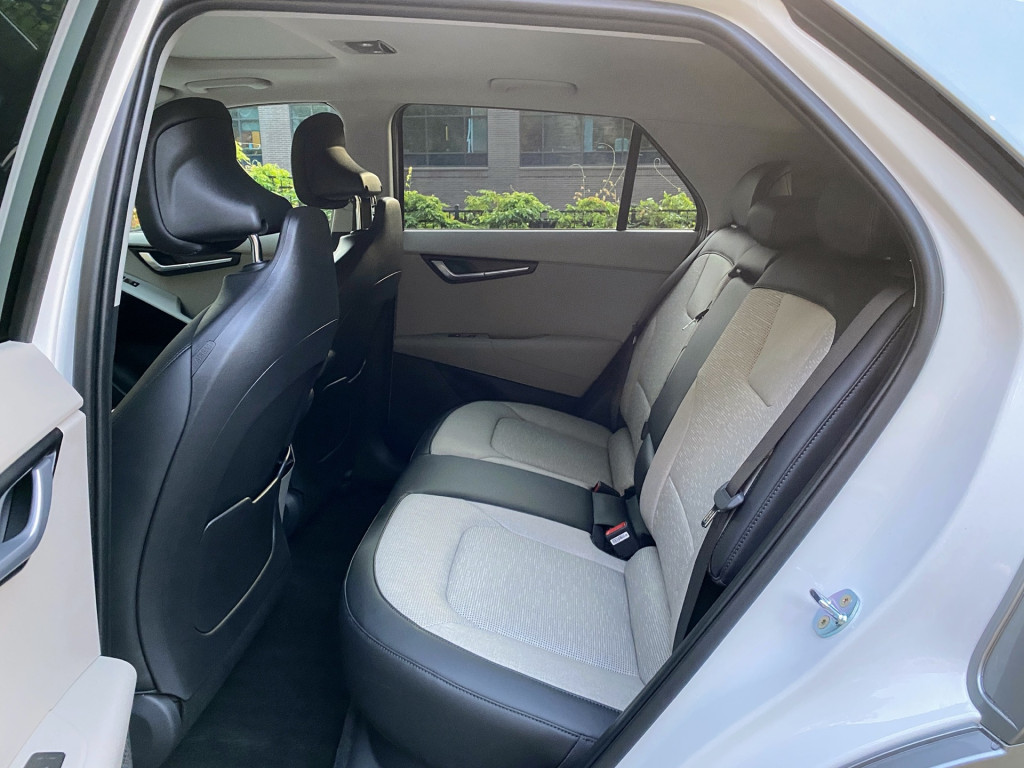
2023 Kia Niro EV
In backseat space, however, the Niro EV is a champ. There’s lots of headroom and legroom in back, and the tall door cuts mean that it’s easy not just to get in but to load kids and child seats. I mulled what it was exactly that made me feel more comfy in the back than in front, but it comes down to plush cushioning. Take note ride-hailing drivers.
Overall dimensions change only slightly, but enough to spell out that this is a significant reengineering of the platform rather than a refresh. Built on a 107.0-inch wheelbase—up from 106.3 inches in the first generation—the Niro EV is now 174.0 inches lone, 71.8 inches wide, and 61.8 inches tall. That’s up nearly two inches in length but just a fraction of an inch in the other measurements.
Sophisticated screen space
The second-generation Niro EV keeps the previous model’s new-design rotary shifter (with a Park button in the middle), but pretty much remakes everything else around it in a broad swooping arc of an instrument panel that you’ll warm up to quickly.
The interface of the Niro EV aligns closely with that of the EV6 and some of the other latest Kia models, giving you two 10.3-inch displays—one of them a configurable gauge cluster, the other a touchscreen for climate, entertainment, navigation, communications, and other vehicle settings.
It is a fantastic, responsive interface, with vivid displays and clarity built into its menu system, and it carries over a just-right minimalist approach that, with a toggle of a button, recasts a row of buttons in the middle for either climate or navigation/entertainment functions.
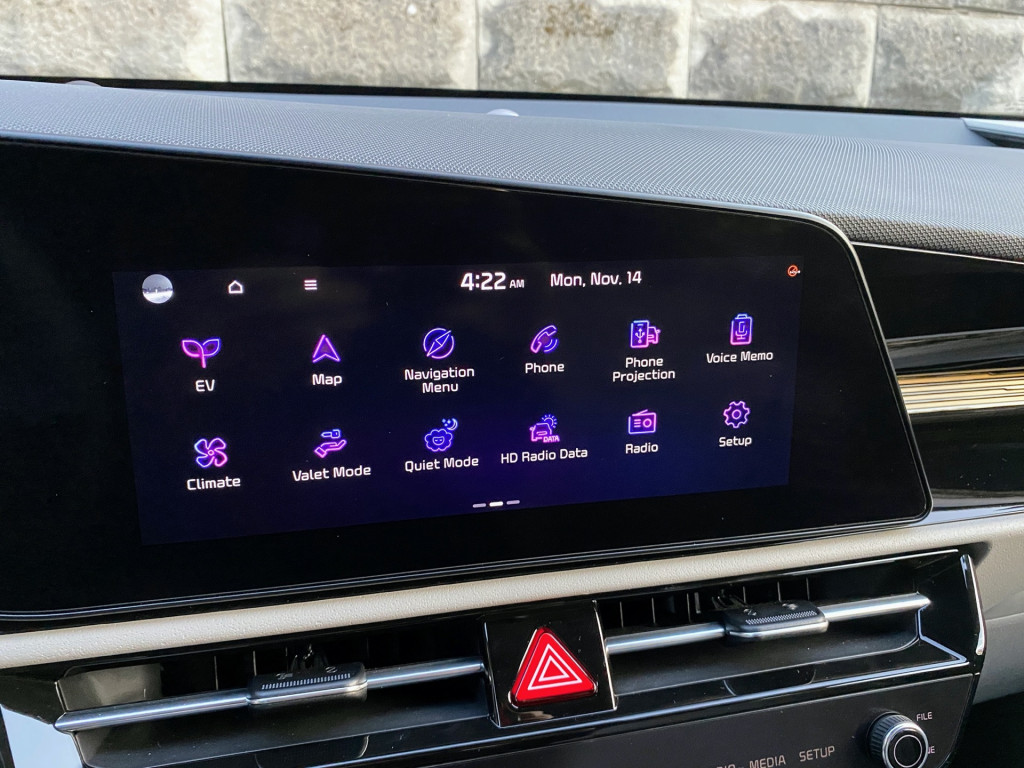
2023 Kia Niro EV

2023 Kia Niro EV
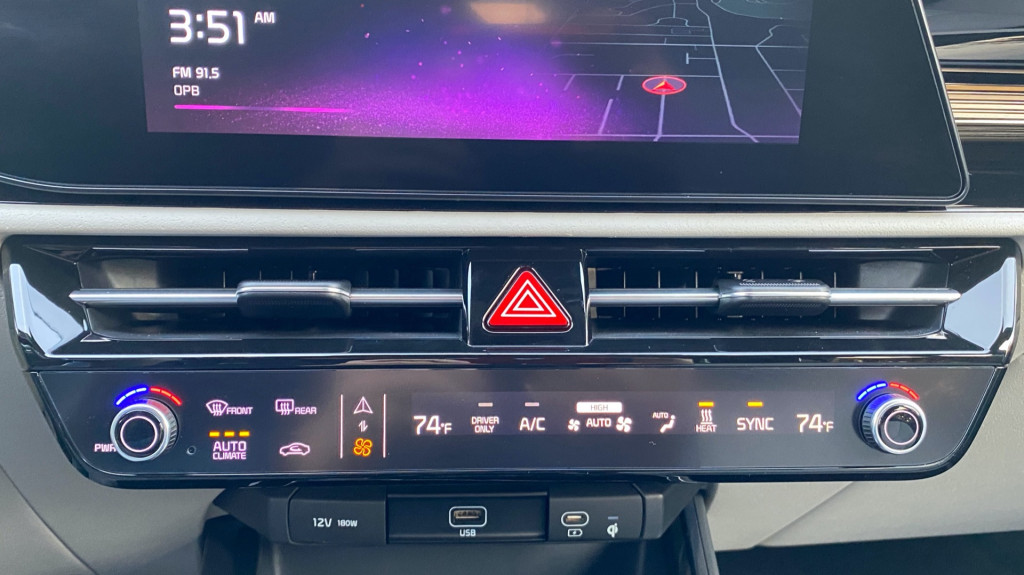
2023 Kia Niro EV
Range and efficiency
The Niro EV has an EPA-rated range of 253 miles—and, we should note, an EPA-combined rating of 113 MPGe. That’s nearly 3.4 miles per kwh.
I didn’t quite see that, and what I saw, efficiency-wise, was good but not wow-worthy.
Over the course of just three already-busy days, I managed to do some longer, metro-area errands each day, plus a brief run out to some more inspiring backroads—altogether including four “cold starts” that required the climate system to warm the car up (simply setting it to 72 degrees and Auto). I started out with a 94% charge and drove the Niro EV about metro-area errands over three days, plugging into my home charger at 19% before turning the car back in the next morning.
Over 141.2 miles that I would call a near equal mix of city, suburban, and freeway driving, with an average speed of 37.7 mph, according to the trip meter, I averaged 3.1 mi/kwh. Temperatures were chilly but mild, primarily in the upper 40s and low 50s over the time I had the Niro EV.
That’s not quite as good as I’ve seen in the EV6 under quite similar temps and driving conditions. It may underscore a point, which is that the Niro EV isn’t built on a dedicated EV platform; it’s still effectively the electric version of a platform that includes hybrid and plug-in hybrid versions.
The U.S. Niro EV comes with a 7.2-kw onboard charger that allows a full charge in around nine hours. A charge at 120 volts takes more than 57 hours. And gosh, we’re thankful they left the charge port in front.
On pricing and value, you have to really love it
What will shoppers looking at the Niro EV also consider? Firstly, it’s hard not to see the Chevy Bolt EUV, which starts at less than $29,000, as competition. A top-trim 2023 Bolt EUV Premier optioned to the brim with GM’s excellent Super Cruise system, a glass roof, and Bose audio adds up to $37,990 including destination. Yes, its somewhat more cramped interior and trim details feel a half-league below, but it’s punchier to drive and certainly no less efficient.
That’s a $10,000 difference. Before considering the $7,500 EV tax credit the Bolt EUV is currently eligible for; the made-in-South-Korea Niro EV isn’t.
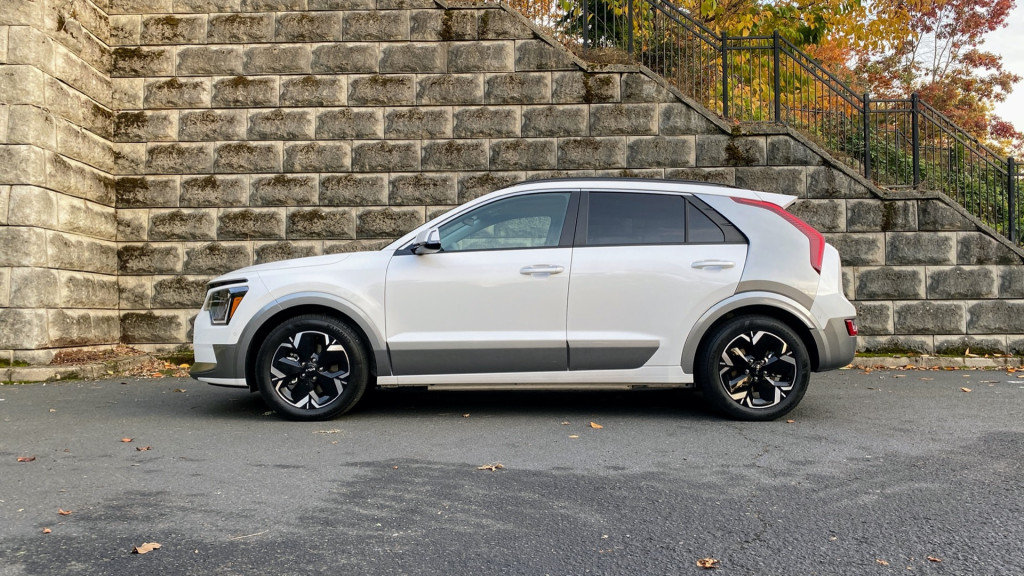
2023 Kia Niro EV
There’s something broken in pricing here, and to hammer back at a point, GM dropped the price of the Chevrolet Bolt family ahead of the upcoming Chevy Equinox EV, and Nissan dropped Leaf prices ahead of the Ariya’s arrival, but there was no such recalibration here.
Does it underscore the urgency any further, Kia, if I point out that at this time many other EVs are still being sold at $5,000 or $10,000 dealer markups, my local dealership is selling Niro EVs at a $2,500 discount?
This story would be very different if the Niro EV had dual-motor all-wheel drive. With good winter tires, a front-wheel-drive EV will probably be just fine—especially with the advanced (think milliseconds of reaction time) traction systems that most models now have. But for families coming out of all-wheel-drive Outbacks or RAV4 Hybrids, it gives them what they think they need.
The way that it lands on the numbers in today’s market, the Niro EV is a puzzling product. Models like the upcoming Equinox EV—or, perhaps the Soul EV Kia balked at before—might be closer to what Americans want and need.



